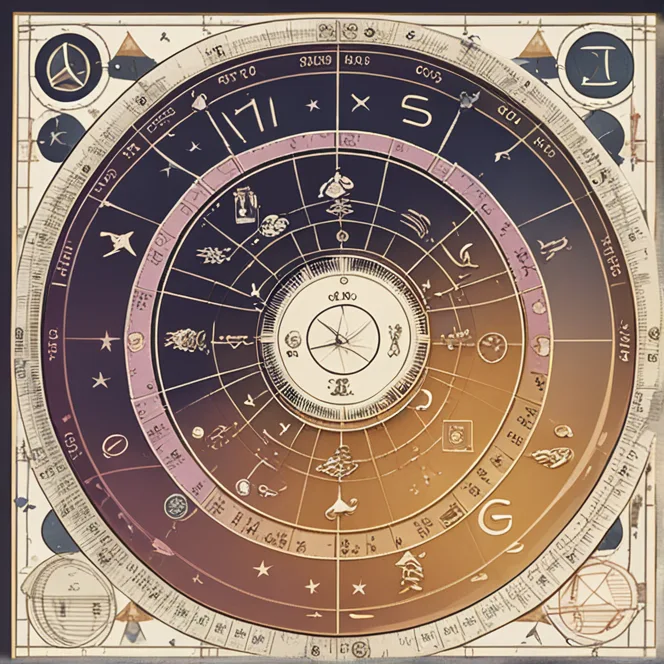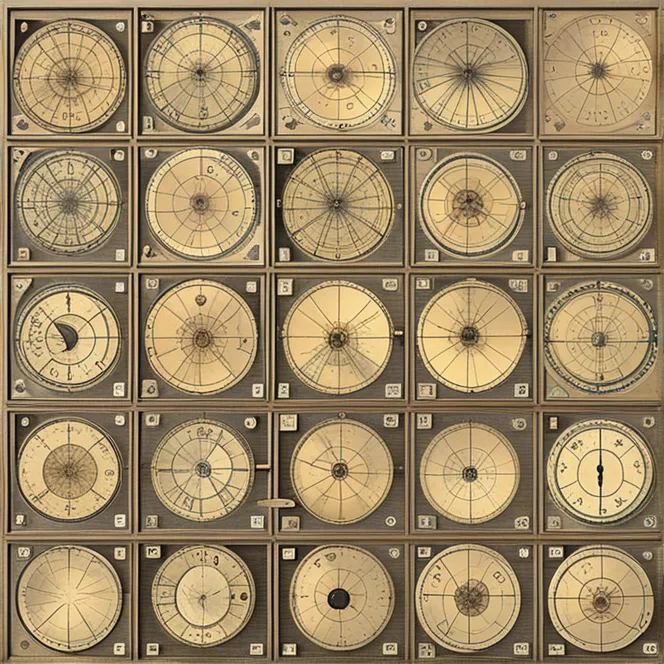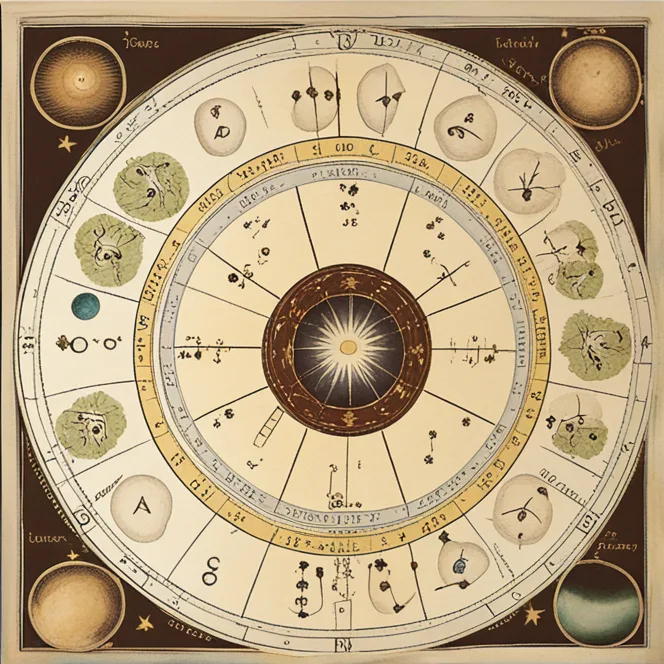
Understanding Your Astrology Chart
Unlock the secrets of your personality and future with a deep dive into the components of your astrology chart.
article by Priya Deshmukh
Intro to Astrology Charts
Astrology charts, also known as natal charts or birth charts, act as cosmic snapshots of the sky at the exact moment you were born. They are intricate maps that astrologers use to understand your character traits, tendencies, and the potential course of your life. The chart is a wheel divided into twelve sections called houses, each representing different aspects of your existence, from personality to career and relationships. By interpreting the positions of the planets, the Sun, and the Moon, as well as their relationships to one another, expert astrologers can provide insights that are incredibly personal and revealing.

The Planetary Influences
Planets are the dynamic energies within your astrology chart that influence various parts of your life. Each celestial body, including the Sun and Moon, rules over specific areas. For instance, the Sun represents your core self and vitality, while the Moon governs your emotional responses. Mercury influences communication, Venus deals with love and beauty, and Mars is linked to energy and aggression. Understanding the role of each planet, along with its placement by sign and house, provides a layered perspective on your personal narrative and how you engage with the world around you.

The Zodiac Signs
In astrology, the twelve zodiac signs offer a guide to an individual's personality traits and behaviors. These signs correlate with the Sun's position in the sky during your birth and are central to astrological interpretations. Aries, for example, is known for its boldness and initiative, while Taurus is associated with stability and sensuality. Each sign brings its own energy to the planets that reside within it, coloring those planetary characteristics with the sign's unique attributes. This can dramatically influence how each planet's energy is expressed in your chart and life.

The Astrological Houses
The houses in an astrology chart represent different areas of your life and experiences. They are numbered from one to twelve and each corresponds to various domains such as identity, resources, communication, home life, creativity, work, partnerships, and more. The planets and signs within these houses show where and how you're likely to encounter certain influences and challenges. The first house, for instance, is about self-image, while the seventh house reflects one-on-one relationships. The distribution of planetary energies across these houses reveals a unique pattern that helps astrologers interpret your personal tendencies and life themes.
Aspects: The Planetary Dialogues
Aspects are the angles planets form with each other in your chart, and they symbolize the dialogues between different parts of your personality. Conjunct planets may merge energies, while a square might indicate tension. A trine is traditionally harmonious, offering an easy flow of traits and potential talents. By analyzing these angles, astrologers can elucidate the complexities of your interpersonal dynamics, internal conflicts, and the aspects of life that might come more effortlessly to you. These insights are crucial for understanding your own astrology chart and can guide personal growth and decision-making.

Deciphering Your Destiny
While many people are familiar with horoscopes based on Sun signs, a full astrology chart provides a profoundly more complex and customized view. It serves as a reflective tool for self-awareness and can be a roadmap for personal development. While some might be skeptical, many find that astrology offers validation and a sense of connectedness to the wider universe. Remember, the chart may indicate potentials rather than absolutes. It's a way to help you navigate life's waters by identifying various currents and undercurrents, not a fate set in stone.
Astrology charts are as unique as fingerprints, each one telling the story of an individual's potential strengths, weaknesses, and journey through life. Consulting with an expert astrologer can help uncover the layers of meaning within your personal chart. Whether searching for empowerment, understanding, or guidance, delving into your astrology chart can be an enlightening and transformational experience. As you explore the celestial configurations of your birth, you might just find a deeper sense of purpose and direction.
Published: 12/7/2023
Modified: 12/7/2023
More predictions
Come back here soon to learn more about yourself and your future


Pursuing Meaning In The Zodiac’s Tapestry
The evocative symbols, entwined in our zodiac signs, pledge to unveil the veiled, offering glimpses into our futures, understanding of our present, and insights into the intrinsic core of our being. But beneath the celestial shimmer and the elegant choreography of the planets, a persistent question lingers: do astrology signs truly mean anything?


The Stable & Practical World Of Earth Signs
In the enchanting realm of astrology, the zodiac is neatly divided into four fundamental elements, each with its distinct qualities: Fire, Water, Air, and Earth. As we delve deeper into this earthly domain of the zodiac, it’s essential to comprehend the intricate details, attributes, and symbolic meanings that define Taurus, Virgo, and Capricorn—the three Earth signs.


Tracing the Roots of Zodiac Signs
The horoscope signs, central to astrology, have fascinated humans for millennia. These twelve signs, forming the zodiac, are more than just symbols; they are a testament to ancient humanity's quest to understand the cosmos. The origin of these signs is a blend of astronomy, mythology, and symbolism, deeply embedded in various cultures. This article explores the fascinating history and origins of the horoscope signs, unraveling their journey from celestial observations to astrological symbols.